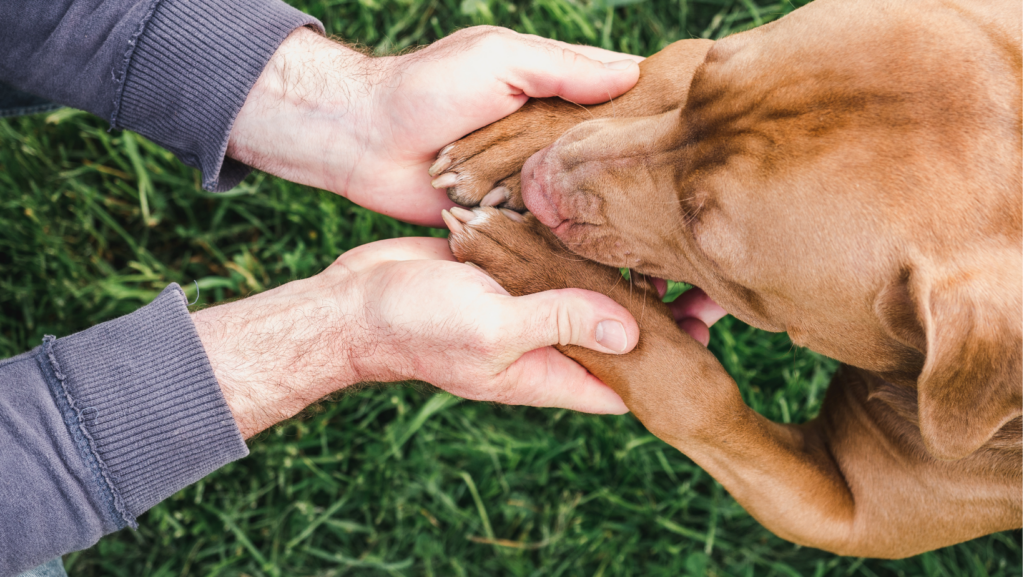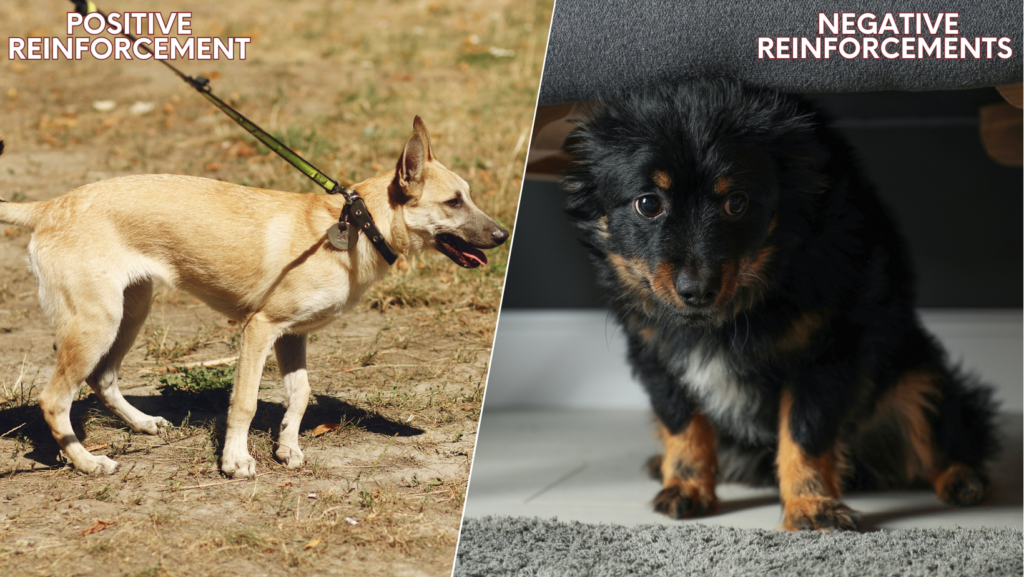If you have a dog who has experienced trauma, you know how difficult it can be to watch them struggle. Trauma can manifest in many ways, including fear, anxiety, aggression, and depression. Fortunately, there are strategies you can use to help your dog heal and regain their confidence.
One key strategy for supporting a traumatized dog is to create a safe and predictable environment. Dogs who have experienced trauma may feel anxious or fearful in new situations, so it’s crucial to establish routines and provide plenty of positive reinforcement.
It’s important to avoid punishing your dog for their behavior and instead focus on positive reinforcement and building trust. You can help your dog heal and regain their confidence with time and patience.
Key Takeaways
- Creating a safe and predictable environment is key to supporting a traumatized dog.
- Desensitization techniques can help your dog gradually overcome its fears and anxieties.
- Patience and understanding are crucial when working with a traumatized dog.
Strategies for Supporting a Distressed Canine

If you have a dog that is exhibiting signs of distress, it can be a difficult and stressful situation for both you and your furry friend. Dogs can experience stress for a variety of reasons, such as separation anxiety, fear of loud noises, or changes in routine.
As a responsible pet owner, it’s important to know how to recognize the signs of stress in your dog and what strategies you can use to help them feel more calm and comfortable. By paying attention to your dog’s behavior and body language, you can begin to understand what triggers their stress and what actions you can take to alleviate it.
There are several strategies you can use to help support a stressed-out dog. By taking a proactive approach to your dog’s stress, you can help them feel more relaxed and happy and strengthen the bond between you and your furry companion.
Behavioral Management Strategies
When your canine is distressed, it’s important to have a plan in place to support them. Behavioral management strategies can be a helpful tool to help your furry friend feel more comfortable and secure. Here are some effective strategies to consider:
1. Positive Vs. Negative Reinforcement

Positive reinforcement is a powerful tool for shaping behavior. By rewarding your dog for good behavior, you can encourage them to repeat it. This can be as simple as giving them a treat or praise when they sit or lie down on command.
Negative reinforcement, on the other hand, involves removing an unpleasant stimulus when your dog does something right. This could be as simple as stopping an annoying noise when they stop barking.
While both positive and negative reinforcement can be effective, positive reinforcement is generally considered to be the more humane and effective approach. It helps to build trust and strengthen the bond between you and your dog.
2. Focus And Attention Training
One of the most effective ways to help your dog when they’re feeling distressed is to work on their focus and attention. This involves teaching them to pay attention to you and follow your commands, even when they’re feeling anxious or stressed.
Start by teaching your dog to sit and stay on command. Once they’ve mastered these basic commands, you can move on to more advanced training, such as teaching them to come when called or to walk calmly on a leash.
3. Use of toys and Games

Toys and games can be a great way to distract your dog when they’re feeling anxious. Puzzle toys, for example, can help to keep their minds engaged and provide a fun challenge. Playing fetch or tug-of-war can also be a great way to burn off excess energy and help your dog feel more relaxed.
When choosing toys and games for your dog, be sure to choose ones that are appropriate for their age and size. Avoid toys that are too small or easily breakable, as these can pose a choking hazard.
Medical Interventions
If your canine is experiencing severe distress, medical interventions may be necessary. Here are two medical interventions that a veterinarian may recommend.
1. Consulting A Veterinarian

If you notice that your dog is showing signs of distress, it’s important to consult a veterinarian. A veterinarian can examine your dog and determine if there is an underlying medical condition that is causing the distress.
For example, your dog may be experiencing pain due to an injury or an underlying medical condition. If this is the case, the veterinarian may prescribe medication or recommend a treatment plan to help manage the pain.
2. Anxiety Medication
If your dog is experiencing anxiety, your veterinarian may recommend medication to help manage the symptoms. There are several different types of anxiety medications that may be prescribed, including benzodiazepines, tricyclic antidepressants, and selective serotonin reuptake inhibitors (SSRIs). These medications work by altering the levels of neurotransmitters in the brain, which can help regulate mood and reduce anxiety.
It’s important to note that anxiety medications should only be used under the guidance of a veterinarian. These medications can have side effects, and it’s important to monitor your dog while they are taking the medication closely.
Importance of Exercise and Mental Stimulation

As a pet parent, it’s important to understand the significance of exercise and mental stimulation for your canine companion. Dogs need regular exercise and mental stimulation to stay healthy, happy, and well-behaved. In this section, we’ll discuss the importance of exercise and mental stimulation and how you can incorporate them into your dog’s daily routine.
1. Regular Exercise
Regular exercise is essential for your dog’s physical and mental health. Exercise helps to maintain a healthy weight, build muscle, and improve cardiovascular health. It also helps to reduce stress and anxiety, which can lead to destructive behavior and other problems.
To ensure your dog gets enough exercise, you should aim for at least 30 minutes of moderate activity each day. This can include walking, running, playing fetch, or any other activity that gets your dog moving. You can also incorporate more structured exercise routines, such as agility training or obedience classes, to provide your dog with mental and physical challenges.
2. Mental Stimulation and Enrichment

In addition to exercise, mental stimulation is also crucial for your dog’s well-being. Mental stimulation helps to keep your dog’s mind active and engaged, which can prevent boredom and destructive behavior. It can also help to improve cognitive function and reduce the risk of cognitive decline in older dogs.
Role of Professional Trainers
Professional trainers play a crucial role in supporting distressed canines. They are trained to understand a dog’s behavior and can help identify the root cause of the distress. Trainers can work with pet owners to develop a training plan that is tailored to the specific needs of the dog.
Trainers who follow the Least Intrusive, Minimally Aversive (LIMA) approach to behavior modification and training are particularly helpful in supporting distressed canines. LIMA is a humane and effective approach that focuses on using positive reinforcement to encourage good behavior. This approach can help reduce stress and anxiety in dogs and promote a positive learning experience.
When working with a distressed canine, a professional trainer will typically start by assessing the dog’s behavior and identifying any triggers that may be causing distress. They will then work with the pet owner to develop a training plan that is tailored to the dog’s needs. This may involve teaching the dog new behaviors or modifying existing behaviors to reduce stress and anxiety.
In addition to providing training and behavior modification, professional trainers can also offer guidance and support to pet owners. They can help pet owners understand how to read their dog’s body language and identify signs of distress. They can also provide tips and advice on how to create a calm and stress-free environment for their dog.
FAQ’s
Dogs can experience trauma from various sources, such as abuse, neglect, accidents, or sudden environmental changes. Trauma can also be caused by natural disasters, loud noises, or other frightening experiences.
Yes, dogs can develop post-traumatic stress disorder (PTSD) from abuse. Symptoms of PTSD in dogs include avoidance, hypervigilance, and aggression. It’s important to seek professional help if you suspect your dog suffers from PTSD.
Yes, rescue dogs can develop PTSD from their past experiences. These dogs may have been abused, neglected, or abandoned, which can cause lasting emotional trauma. It’s important to provide rescue dogs with a safe and supportive environment to help them recover from their trauma.
To comfort a traumatized dog, creating a safe and calm environment for them is essential. This can include providing a comfortable space to retreat to, avoiding loud noises or sudden movements, and offering gentle reassurance. It’s also important to seek professional help if your dog’s trauma is severe.
To help a rescue dog with PTSD, providing a consistent routine, positive reinforcement, and plenty of exercise and mental stimulation is important. It’s also important to seek professional help from a veterinarian or animal behaviorist specializing in trauma.
Yes, dogs can remember being attacked by another dog. This can cause lasting emotional trauma and may lead to fear or aggression towards other dogs. It’s important to seek professional help if your dog has been attacked to help them recover from their trauma.
Conclusion
Helping a traumatized dog can be challenging and emotional. Still, with patience, understanding, and the right strategies, you can support your furry friends and help them regain their confidence and trust. Always prioritize your dog’s safety and well-being, and seek professional help if necessary.
Meet Fabian Wright, our guide into the animal realm at PetLoversArena.com. Having served as an Animal Care Specialist for the Ruwenzori Team at the Kansas City Zoo, he prioritizes conserving exotic species by replicating their habitats. Fabian aspires to share captivating stories of creatures, big and small, through PetLoversArena.com.

